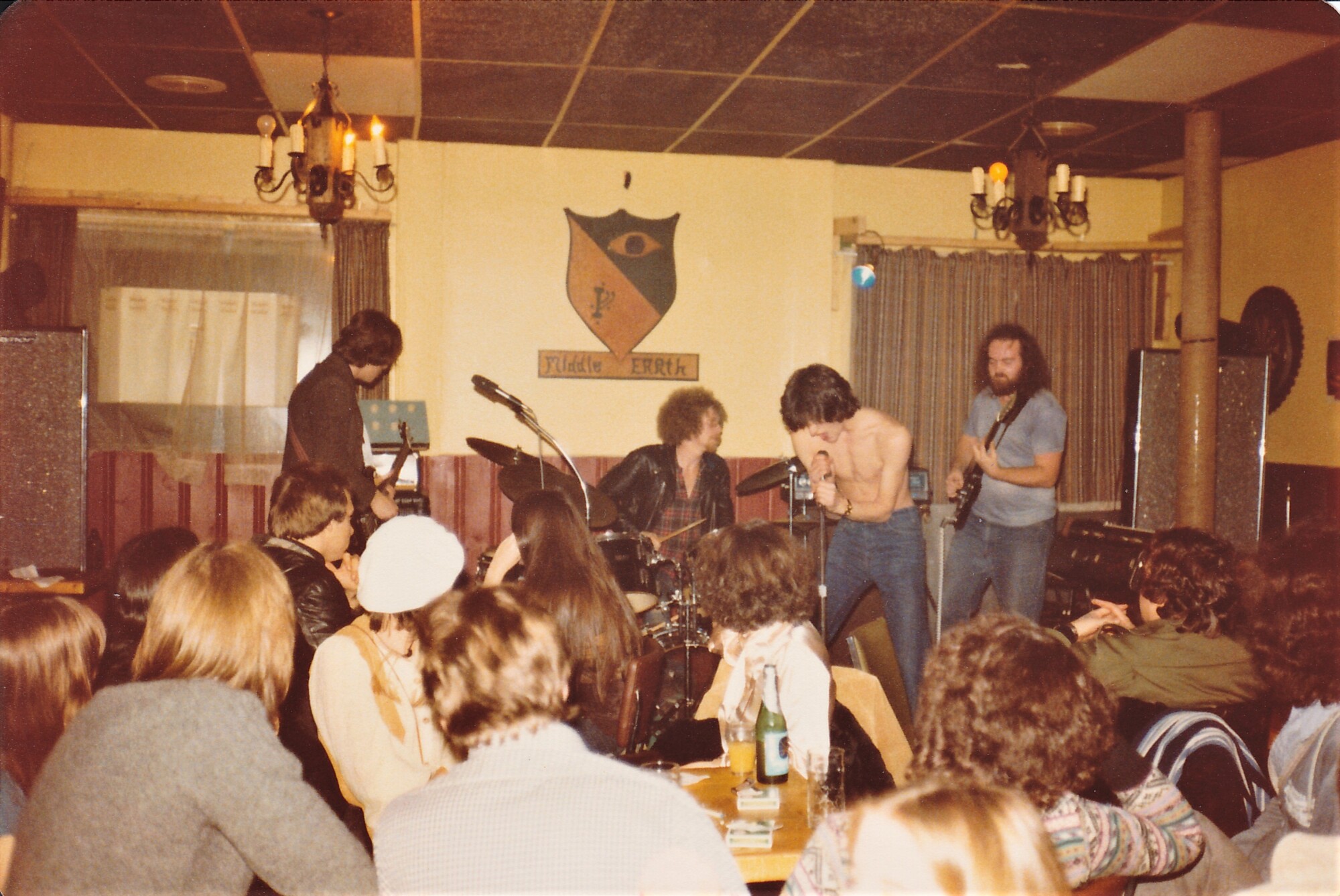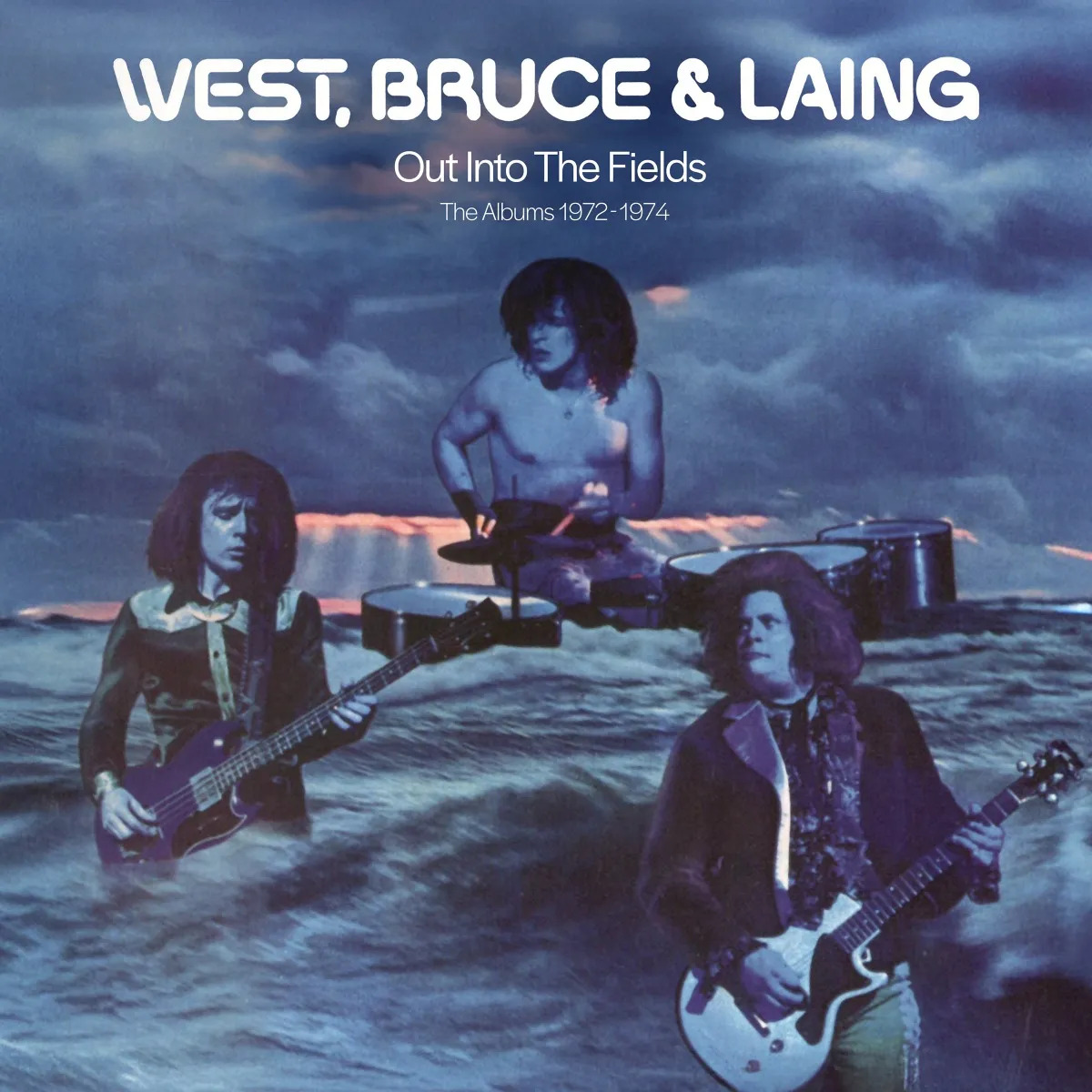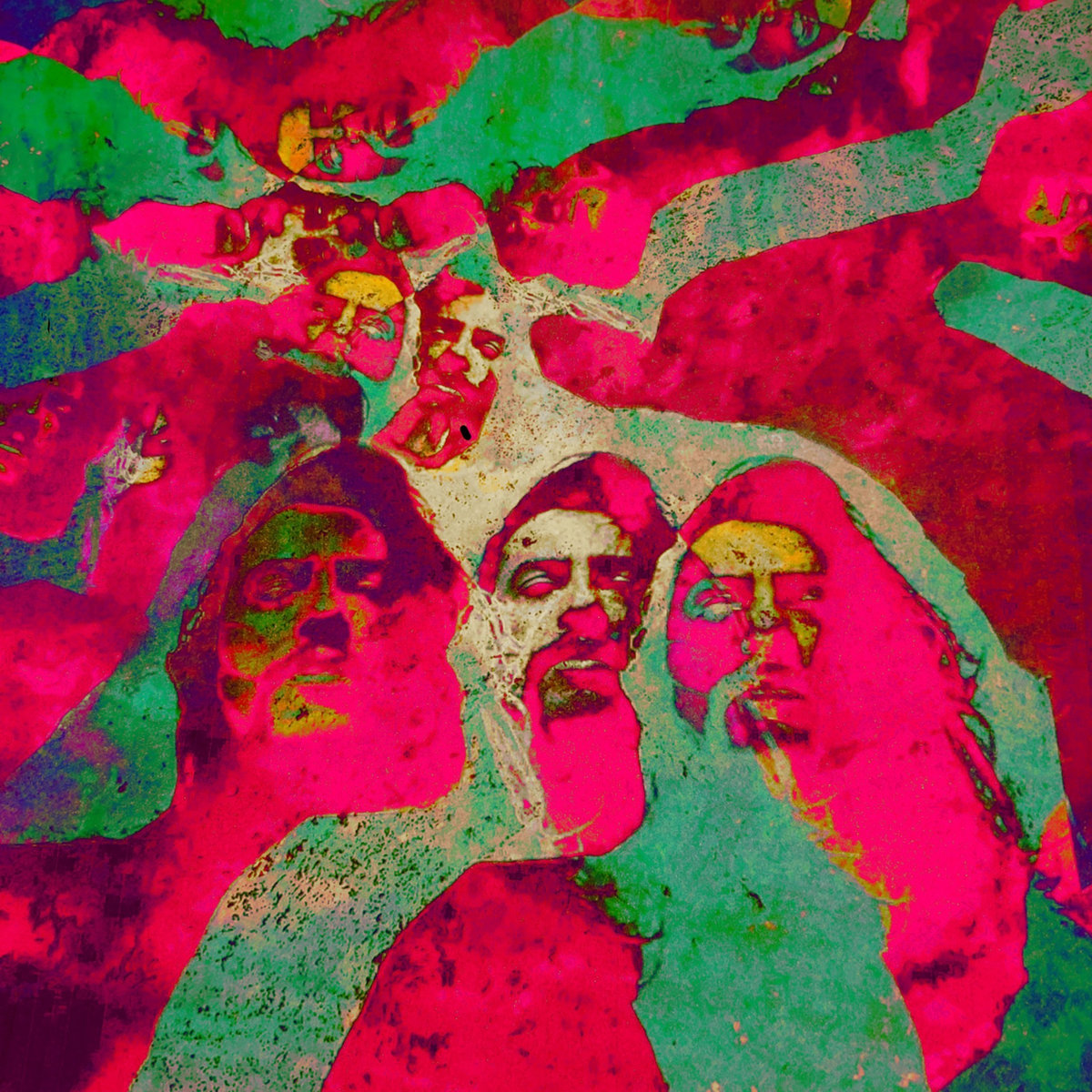Da Slyme | Interview | “If There’s No Rubble, You Haven’t Played”
Celluloid Lunch Records recently released an archival collection of recordings from underground band from St. John’s, Newfoundland, Da Slyme, active from 1977-89.
Their sole release on vinyl from 1980 is now a collector’s item. Da Slyme were St. John’s, Newfoundland’s first punk rock band. They formed in 1977 and released their double self-titled album three years later in a true DIY fashion.
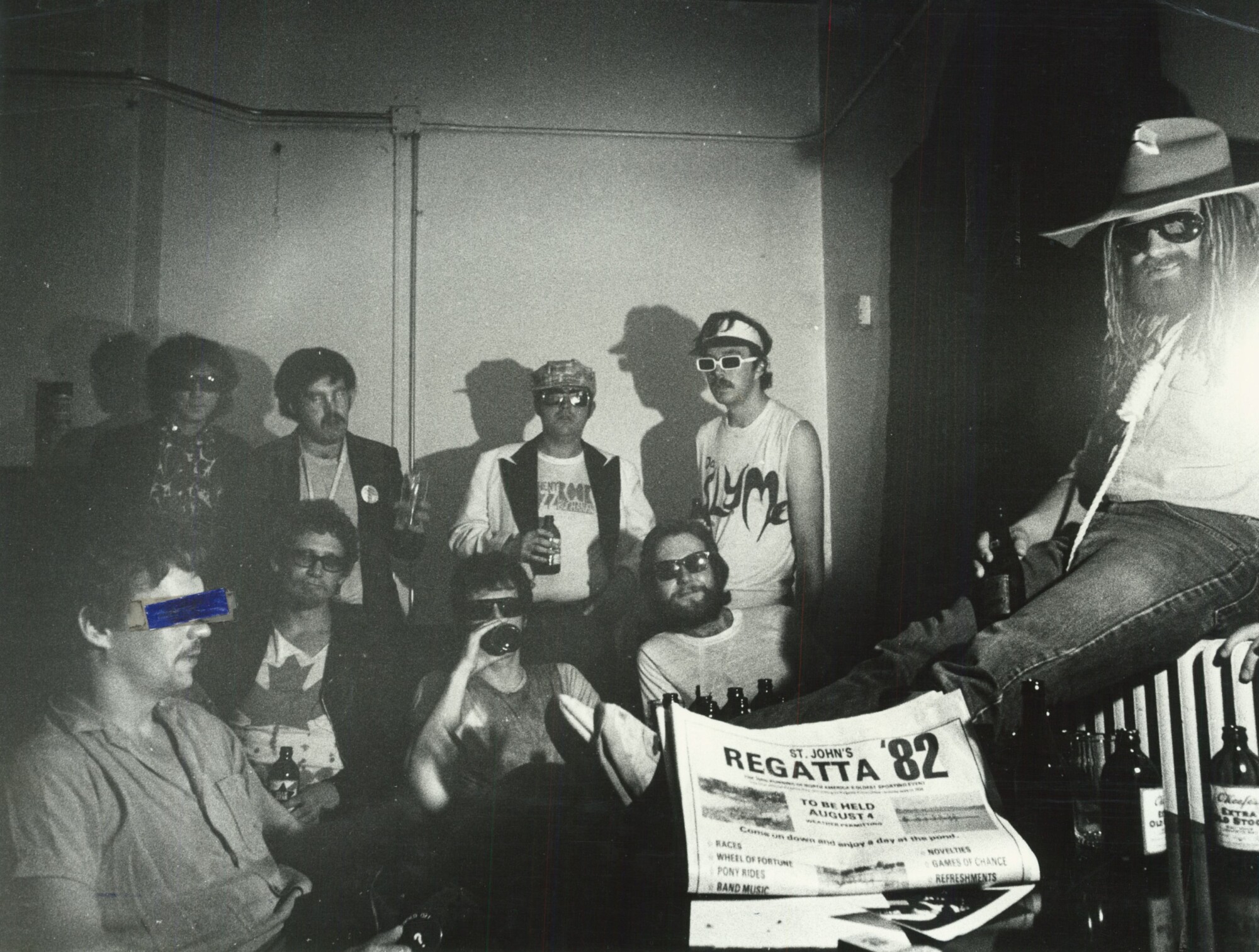
“We were the first punk band in Newfoundland”
Have you ever heard the term “real people” musicians coined by Paul Major? I think your band is perfectly matching his description of musicians that were not interested in anything else than making music as they liked?
Kirt Sic-O-via (Wallace Hammond): I’m not familiar with the Paul Major quote.
Stig Stilletto (Peter Morris): First I’ve heard of Paul Major is with your question. So I went to the Google machine and read a lot of interesting stuff about him and his work. Thanks for opening that up. Paul would have fit in well with us. Da Slyme probably fits his description of “real people” musicians. We are all music fans. Most of us were in university [Memorial University of Newfoundland, or MUN] and volunteered at the student radio station, MUN Radio. That’s where we met in the mid 1970s. And that’s where we had access to records and music press. We had heard The Ramones, The Clash, The Sex Pistols, and we had read about the nascent punk scenes in London (Melody Maker, New Music Express), and the States (Creem Magazine, Rolling Stone). So we sort of knew something about punk, and probably more than most people in Newfoundland in 1976 and ’77. MUN Radio’s large Studio A, provided space for all sorts of music experimentation.
Kirt Sic-o-via (Wallace Hammond): Newfoundland was long a British colony before joining Canada in 1949. Culturally our ties to the British Isles run deep. In MUN Radio we had access to the latest and more esoteric music of the British scene. Especially folk, prog and later punk. Being of course also part of North America we were also saturated with the American and Canadian bands of the era. In 1974 , at the radio station I met Craig Squires (No Monikker). We liked the same music and were both amateur players. We began to jam together and at odd times with Peter. The jamming always consisted of improvisations. By 1976 or so another individual, Terry Carter (Pasquale Neutron) came into the MUN Radio orbit. Terry was more rock and roll oriented than myself and Craig. We were all friends and Terry was actively trying to formulate some kind of musical grouping. He would invite people of often diverse interests to jam and we did so in the radio station. That fall most of the key participants in what would become Da Slyme were out of province and a strange letter arrived from Peter about an appearance/persona that he created for a Halloween party in Edmonton out in western Canada. Big laugh. Christmas came and myself and Craig were in the radio studio again making experimental percussion tapes. We had a drum kit borrowed from Craig’s brother. Around 11 pm we gave up for the evening and decided to go downtown to a certain bar where we hoped to run into Peter and Terry who we heard were back in town. I proposed, based on Peter’s letter, the fact that Terry was interested in being the drummer in a band and that we had at our disposal a drum kit, that we have a bash at this punk rock thing. They were on, and the very next day Da Slyme began.
I’m extremely excited about the new release by Celluloid Lunch, ‘If There’s No Rubble, You Haven’t Played: Collected Recordings 1977-89’. How long did you work on this compilation and how involved was the band within the process?
Stig: First thing fans need to know that this is a new record for us. It is not a re-release of our 1980 double album. This is an archive of our work from 1977-89. It does include a couple of tracks off that 1980 double LP. It also has some tracks off our 1999 CD ‘The 20-Year Scam’ and a whole bunch of other things that have never been released before. It highlights how we first interpreted punk rock, how we evolved as a band, and it gives a glimpse into some material that we do that bends the limits of what some might call punk rock. We have varied musical tastes and that comes out in our punk and everything else we do.
Joe Chamandy of Celluloid Lunch Records from Montreal was in Newfoundland a few years ago and he approached our guitarist Kirt with a proposal to re-release our 1980 double LP (self-titled Da Slyme – we spray-painted Da Slyme on the album jackets of other artists because after we had it pressed we couldn’t afford to package it, so we got our hands on these other jackets, and put our record in them – a very punk-like thing to do, apparently). Anyway, we didn’t want to do a re-release because those 1980 records are now valuable collectors’ items. Instead, we pitched a new project to him. Something that would scan the history of Da Slyme and add to the material that we already had out there. Joe and Celluloid Lunch were on board with the idea.
Kirt: We have recordings of ten or more shows of the 30 we played.
Stig: Hours and hours of recordings. We spent the summer and fall of 2022 reviewing those tapes, and then worked with Joe at the label to come up with the material that would be on the album. The label also used our large collection of photos and press clippings to produce a 32-page booklet and large Da Slyme poster. That booklet also has lyrics and extensive liner notes that we wrote to flesh out the new LP’s package!!!
Would you like to share some further words about the material appearing on the collection? Where was it recorded and what are some of the highlights in your opinion?
Stig: All the cuts on the new LP were recorded on the Island of Newfoundland, which is part of Canada. We sit in the north Atlantic with a population of just over 500,000, and are as far east as you can get in North America. Da Slyme happened because of, or in spite of, our relative isolation. If you want to do something around here, you best do it yourself because nobody else is coming to do it for you.
We initially did Da Slyme to raise money for MUN Radio. We created the band, wrote the songs, promoted the first gig, which turned into a near riot. And that was supposed to be the end of it. But what we created took on a life of its own, which is wild because we never played outside of St. John’s, the capital city of Newfoundland.
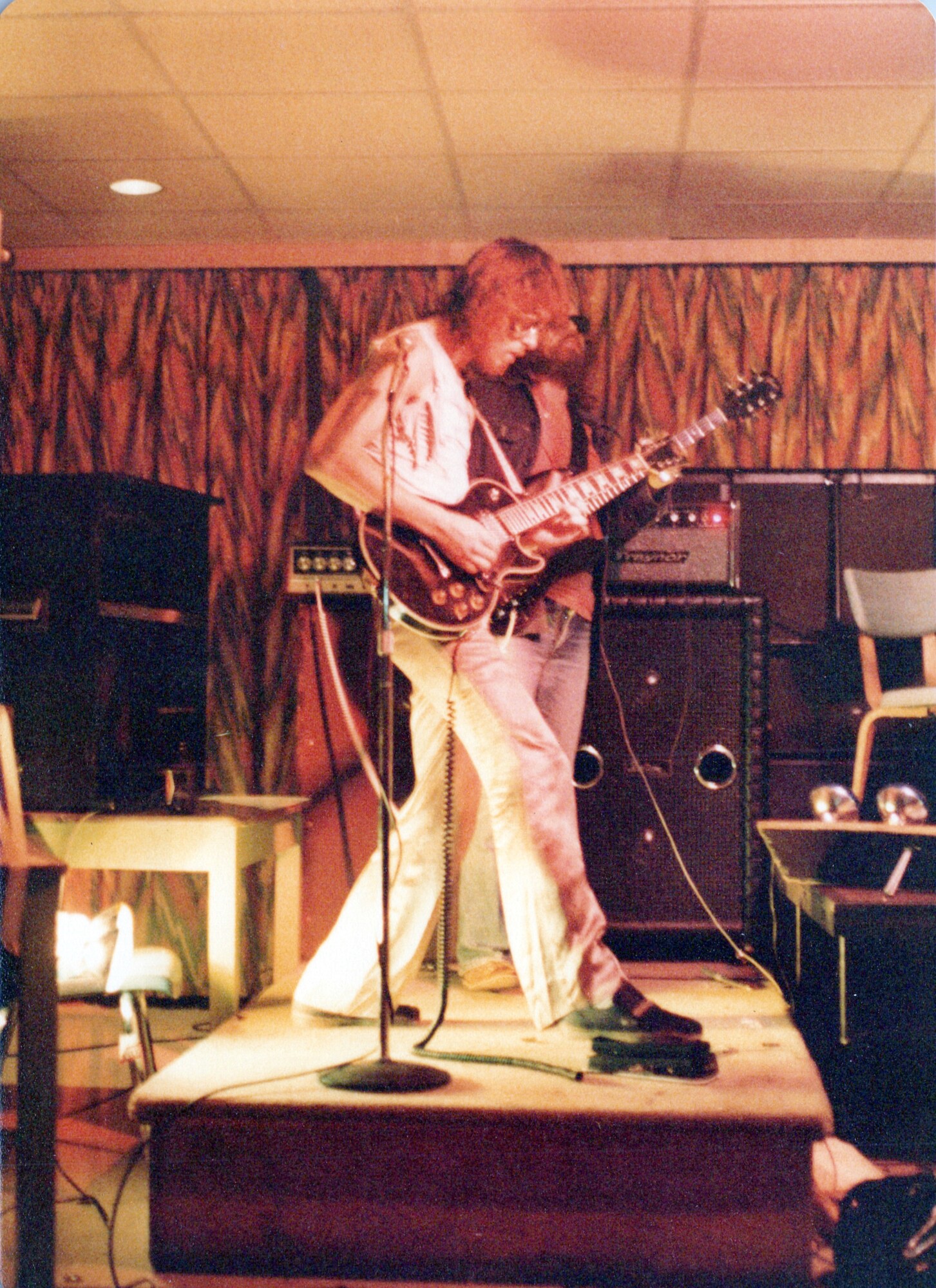
The new LP ‘If There’s No Rubble, You Haven’t Played’ opens with our signature tune ‘Piss-Eyed Sleezoid’. This particular track was the very first take of the very first song that we wrote on December 23, 1977. While a couple of us were setting up our meagre gear in the radio station’s studio, a couple of others sat on a windowsill and wrote the words. We banged around with it for about 15 minutes and turned on the tape recorder and this is what came out – as raw as punk could ever be. Fans looking for the pure punk of a more proficient Da Slyme will gravitate to cuts on the new LP like ‘My Mind is Shot,’ ‘Violence Anarchy Baby Mother Daddio Dig’ and ‘No Talent,’ all of which are taken from later live shows of the band. And for collectors of the unusual, we have also thrown in a couple of radio ads that we produced to promote that first gig.
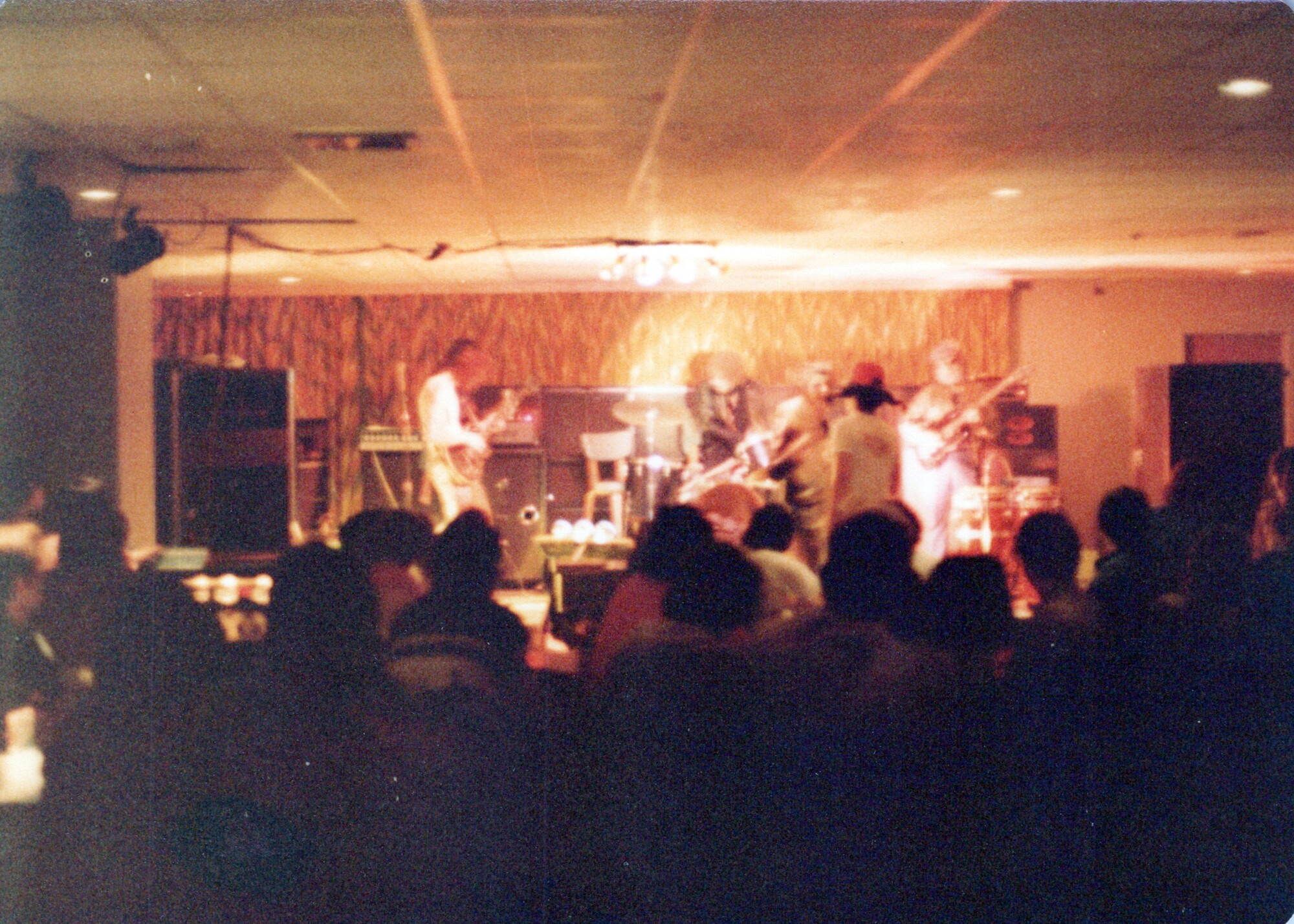
Let’s go way back to your childhood and teen years. What was growing up for you like? Where did you live?
Stig: We are all from Newfoundland. It’s a great, safe place to grow up. From time to time it has its economic challenges, and most of us were familiar with unemployment and the pogie before and during Da Slyme. That comes out in the songs. We are all music fans, which is probably why we joined the school’s MUN Radio with its cabinets full of records. Tastes vary. It’s safe to say that we all have an ear for punk, but the musical tastes and knowledge of the members is varied and extensive. If it clangs, one or the other of us is into it.
What was the scene like in your town for a music freak like you? Were there certain hangout places? Did you see a lot of shows? Where did you get new vinyl records?
Kirt: As far as concerts go, we are off the beaten track of concert tours. It’s expensive to get here and the audience pool is not large. In the early seventies there was a progressive crowd booking entertainment for the university. For instance, in 1972 they were able to book Captain Beefheart for two shows. I think almost everyone in Da Slyme was at those shows though we didn’t know each other at the time.
Stig: There are a lot of really good musicians in Newfoundland. The major influence is Celtic traditional music – people trace their roots back to England, Ireland, France. But, with a few exceptions, working musicians in the 1970s around here played trad or cover tunes, radio stuff. There were a few bands doing original material, and I think that had an influence on us. But until we came along, there was no punk. We were the first punk band in 1977, followed quickly by The Reaction, and the shows we collaborated on with them in late 1978 and through ’79 and ’80 were the first punk shows in Newfoundland. It didn’t create a punk scene, but it may have planted a seed for what did turn into a punk scene by the early 1980s when new, younger bands came along.
Were you or any other member of the band part of any other bands before Da Slyme? Are there any released or even unreleased recordings of that?
Kirt: The first band that myself and Craig played in was called Wet Cheese Delerium and played one outdoor show in July 1977. Our set list was varied: Pink Floyd, Roxy Music, King Crimson, John Cale and various jam segments. The band ended, but the seed was planted.
Stig: I wasn’t in a band, but I used to jam a bit with some of the other guys. A few of the other Da Slyme members had side projects during Da Slyme and after. Kirt set up his own recording label, Vikki Beat, that produced albums on cassette tape. Some of those came from bands that Kirt and fellow Da Slyme members Tony Richards (Roscoe Santiago), Craig, Justin Hall (Dead Beat) and Terry were in, including The A-Tones (one release ‘The Quick and the Dead’), The Bubonic Plague (two releases ‘Wild Wild Youth in Asia’ and ‘Smile Think Positive’) and, most notably, Dog Meat Barbecue, who had a series of cassette releases and one CD. Justin was also in the band Bung, which did a bit of touring in Canada and released one CD. But for me, Craig Butler (Snotty Slyme) and George Smith (Goohaw Groon), Da Slyme was our only band.
“My lyrics have always had a political bent”
Was there a certain moment in your life when you knew you wanted to have your own band?
Kirt: I was 15 in 1968. Friends turned me on to the great bands of the era: The Byrds, Cream, The Who, Jimi Hendrix Experience, Jefferson Airplane. Through The Byrds I became aware of the 60s Bob Dylan. My lyrics have always had a political bent. Punk was definitely informed by the snark of Bob Dylan, The Rolling Stones and many others. Around the same time I got my first guitar, a $17 acoustic. As I grow older, I realize that I am still only a rank amateur. But that has never stopped me! Don’t let it stop you either.
Tell us about some of the early influences that led you to form Da Slyme?
Stig: Da Slyme was formed for a laugh. We played the first gig February 3, 1978 (now known as Slyme Day in our world!). That gig was a near riot, with Snotty Slyme off to the hospital to be stitched up before we had finished our set. I was in the same emergency room the next day with a banged-up toe from wrestling with a few punters in front of the stage. What followed since then continues to be out of our control. We put out that double vinyl in 1980 just because we could. Nothing more, nothing less. We put out the CD ‘The 20-Year Scam’ in 1999 because we wanted to capture for posterity the songs that were written after the double vinyl. We’ve been covered, we’ve been written about, we’ve been commented on, we’ve been included in punk compilations, and we’ve been recognized for what we did and how we did it. We are among the first group of bands invited to be in the new Punk Rock Museum that just opened April 1, 2023, in Las Vegas (a copy of our double LP is on display there). None of that was generated by us. It all happened organically. This was never designed to last, and yet here we are decades later talking about it. As for the music, The Ramones initially provided a template for Da Slyme songs. Simple songs of a few chords with basic lyrics. Play it fast and try to nail the ending. Songs got a little more complex as our playing improved. But our music influences are all over the place – we were listening to everything from Captain Beefheart to Roxy Music, to Gentle Giant and Gong, to Mott the Hoople and The New York Dolls…and beyond.
Kirt: I would add here that I was less into punk rock per se than some of the others. But, being a fan of Van Der Graff Generator and Peter Hammill, I was able to get (as an import) Hammill’s solo album ‘Nadir’s Big Chance’. Recorded in 1974. I believe it influenced people like Johnny Rotten and Morrissey. It influenced me, and I think half of Da Slyme also have copies from that time.
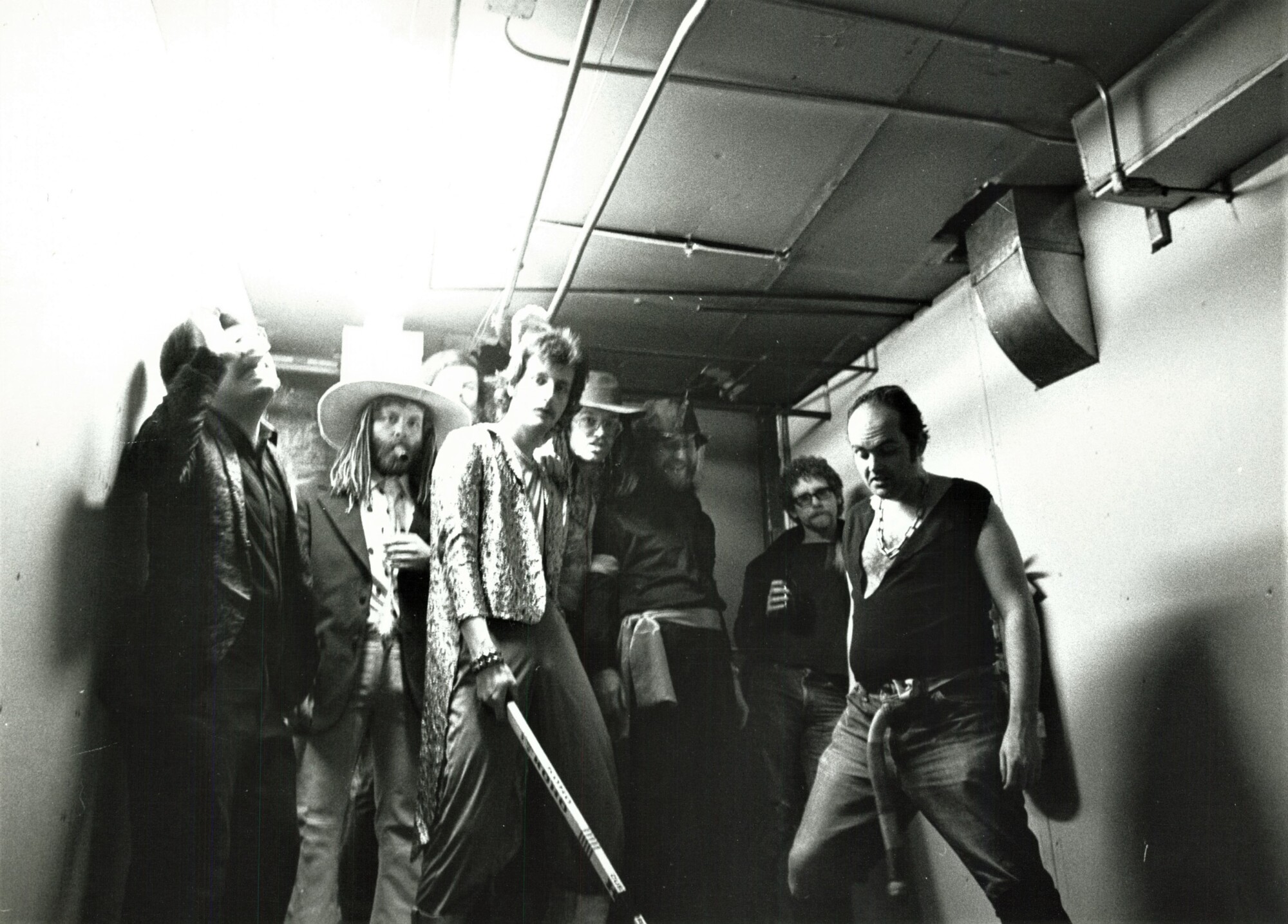
Speaking of that, can you elaborate on the early formation of the band and who were members of the band? Did the lineup change during the years?
Stig: The group for the first day December 23, 1977, consisted of Pasquale Neutron, drums and vocals; Kirt, guitar; Stig, guitar and vocals; No Monikker, bass; Goohaw Groon, tapes. The group for the first gig on February 3, 1978 was: Kirt, guitar; Stig, guitar; Goohaw Groon, bass; Snotty Slyme, vocals; Dead Beat, drums; Pig Filthy, congas. Later in 1978 Roscoe Santiago, vocals and harmonica, joined us. Others helped over the years, but the complete ensemble evolved to (and continues to be): Dead Beat (Justin Hall), drums; Goohaw Groon (George Smith), keyboards; No Monikker (Craig Squires), sax, bass; Pasquale Neutron (Terry Carter), vocals; Roscoe Santiago (Tony Richards), vocals, harmonica; Snotty Slyme (Craig Butler), vocals, jawbone d’ass; Kirt Sic-o-via (Wallace Hammond), lead guitar, bass; Stig Stilletto (Peter Morris), bass, guitar. With (from time to time): Pig Filthy (Gary Day, RIP), congas, vocals; Rick Refuse (Rick Neale, RIP), MC; Stark Raving Mad (Neil Pottle), congas; Dr. Cod (Mike O’Brien), MC; The Ain’t Got No IQs (Collingwood, Martin, Ash, Deir, and assorted others), backing vocals.
How long was the band active? Did you play a lot of shows?
Stig: We played semi-regularly from 1979 through to 1984. We had a reunion in 1989. And then we played one last time in 1999 to launch the CD ‘The 20-Year Scam’. That concert was streamed live to the world on July 3, 1999. But we were not prolific. We played just over 30 gigs and wrote over 50 songs during our entire span. This was never a job.
What did your gigs look like? Did you share stages with any bands?
Stig: Our gigs were often full shows that we developed on some theme. For example when the touring Beatlemania show came to town and played at the city arena, that same night we did a show at the university that was a piss take on it titled ‘Bagelmania’ — the wild opening of that is up on YouTube. Early on, we didn’t have enough material for a full night, so we teamed up with other bands, most notably The Reaction, to fill out the bill, By 1984, we could command a stage for a full night with few repeats.
Your sole album was self-released in 1980. How many copies did you press?
Stig: There were 535 Da Slyme double lps pressed in 1980. Only 10 were ever sent out of Newfoundland by us. Yet today that record is all over the world, and commands big bucks on the collectors market. We also released that CD ‘The 20-Year Scam’ in 1999. Only 300 of those were produced and, while CDs are not as collectable, we keep getting asked about that one, too. And since word got out about “If there’s no rubble, you haven’t played” the interest in all that stuff has taken off again
Our full discography includes:
Discography:
1980: LP (double vinyl) – ‘Da Slyme,’ Loo Enterprises (Newfoundland)
1998: LP (vinyl compilation) – ‘Smash the State III’ (4 songs)
1999: CD – ‘The 20-Year Scam,’ Loo Enterprises (Newfoundland)
2005: CD (compilation) – ‘Punk History Canada Presents: Only in Canada, Eh! (77-81), Volume One’ (one song ‘Crazy Glue’)
2023: LP (vinyl) – ‘If There’s No Rubble, You Haven’t Played,’ Celluloid Lunch Records (Montreal)
What’s the story behind your debut album? Where did you record it? What kind of equipment did you use and who was the producer? How many hours did you spend in the studio?
Kirt: Sides 1 and 2 were recorded on a Dokorder 4-track reel-to-reel. We utilised a primitive 6-channel mixer. The gear was mine. We recorded in the main studio area of MUN Radio. Sides 3 and 4 were recorded live, some reel-to-reel, some cassette. Just stereo miking in the ceiling or mono feed off the main live mixer, a ten-channel Altec 1220.
Stig: Side One of the studio disc is the set from the first gig. A week after we did that chaotic gig, we went into MUN Radio and recorded those songs for our own collections because we were never going to do it again. Side Two of the studio disc is the 1979 Da Slyme and was again recorded in Studio A. We produced it all ourselves and probably not more than a week on and off in the studio putting all of that together.
The live disc features performances from gigs we did in downtown St. John’s and at the university throughout 1979. The music is augmented by our master of ceremonies, Rick Refuse, who got the gig because he was the first person to throw a beer bottle at us!
Would you like to share some further words about some of the tracks?
Stig: The new LP ‘If There’s No Rubble, You Haven’t Played’ is a good scan of our career. I think it shows the fun we had, our bizarre sense of humour and our evolution as a band and performers. We never took this thing seriously, and that comes through clearly. But it also shows that we had some pretty abrasive punk chops. The song ‘No Talent’ on the LP is all about us and summarizes our take on Da Slyme: “We’ve got no talent and we don’t expect applause, We’re out of tune and our sound is a lost cause, What do ya think about that, Oi, Oi Oi?”
Is there any unreleased material by Da Sylme or any related projects left?
Stig: Lots of stuff. As we were reviewing the material for the new LP, that 1989 reunion show really popped. We have a 4-track audio recording of it. We have a two-camera video recording of it (from back of hall and front of stage). We might do something with that. There’s also a filmmaker who is working on a doc about Da Slyme improbable story. He’s interviewed all of us and we’ve given him access to our other videos (the earliest from 1978) so we’ll see what comes of all that.
When did you stop playing together?
Stig: The last time Da Slyme played together was 1999. But half the lads continued on in other bands like The Bubonic Plague (who did a number of gigs in Toronto), The Reaction, The Issue, Big Tears Dog Meat Barbecue and a few others.
What happened after the band stopped? Were you still in touch with other members? Is any member still involved with the music?
Kirt : I’m a sound technician by trade. I’m still doing it – I’ll be 70 this summer. Craig and I still play in an experimental band called The Black Auks. I had a heart attack 5 years ago but it ain’t over till it’s over! Half of the Slyme members have been active together in a succession of bands through the decades: The A-tones, The Bubonic Plague and Dogmeat Barbeque.
Stig: Yeah, we’re still in touch and get together for a beer and a chat whenever most everyone’s in town. With the new LP, in contact a bit more. Da Slyme has been a great thing for keeping us connected to each other.
Looking back, what was the highlight of your time in the band? Which songs are you most proud of? Where and when was your most memorable gig?
Stig: The first gig was unforgettable, as was the 1989 reunion (a large club, overcapacity, punters lined up to get in, lights, smoke machine, stuffed seals, you name it. It was a good time.). But they all had their charms. The stage was a playground for us to make noise and engage in bizarre humour. It was always a laugh, and when it started to feel like work, we’d stop doing it for a while and then pick it up again later.
Let’s end this interview with some of your favourite albums. Have you found something new lately you would like to recommend to our readers?
Kirt: I’ve amassed over 3,000 vinyl albums and 1,500 CDs. Rock. Avant-garde, jazz , world…you name it. Just bought Gong, Captain Beefheart , Groundhogs and Nico for Record Store Day. Get the picture? Punk/Post-punk-wise I’ve got a great affinity for New Model Army-get ‘The Love of Hopeless Causes’ the most important album ever.
Stig: I think ‘Never Mind the Bollocks, Here’s the Sex Pistols’ is the best punk album ever. As for other personal tastes, I have wide interests, but I’ll give you four albums that I think are perfect, start to finish – Spirit ‘Twelve Dreams of Dr. Sardonicus’; Roxy Music ‘For Your Pleasure’; King Crimson ‘In the Court of the Crimson King’; and Wishbone Ash, ‘Argus’. That’s all older stuff. But for fans of well-played music that sort of goes everywhere from folk, to pop, to jazz, to rock and to rock with an edge, anything by Canadian Bruce Cockburn is worth picking up.
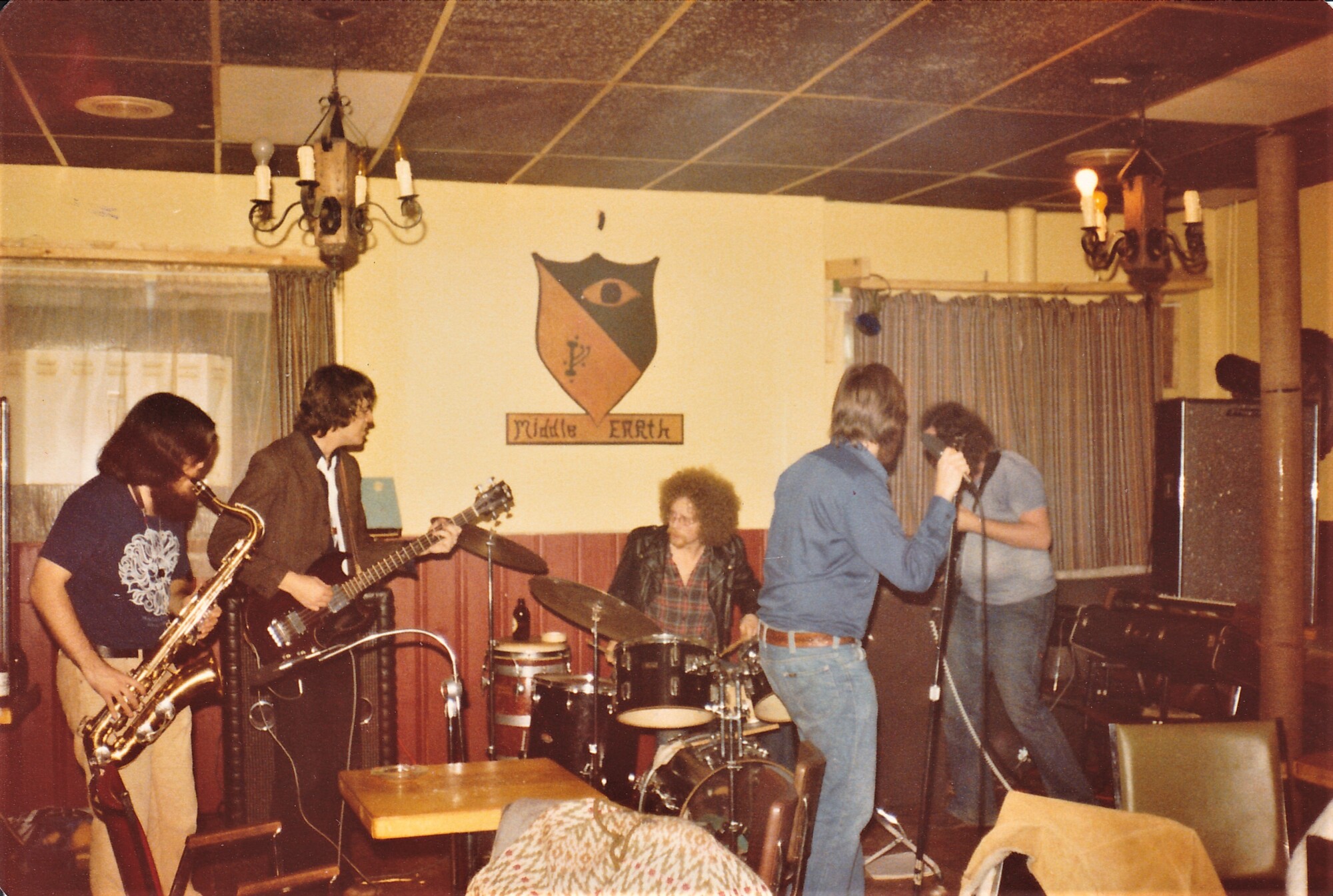
Thank you for taking your time. Last word is yours.
Stig: Thanks for your interest in Da Slyme, and thanks to all those people all over the world who continue to have an interest in our quirky little band from the Island of Newfoundland. And if they want to learn more about our ridiculous story, it’s all there with photos, reviews and other Slyme flotsam and jetsam on www.daslyme.ca.
Klemen Breznikar
Headline photo: Da Slyme at The Middle Earth Pub in downtown St. John’s in early 1979 | L-R Stig Stilletto, Dead Beat, Snotty Slyme (shirtless) and Kirt Sic-o-via
Da Slyme Official Website
Celluloid Lunch Official Website / Instagram / Bandcamp / YouTube

